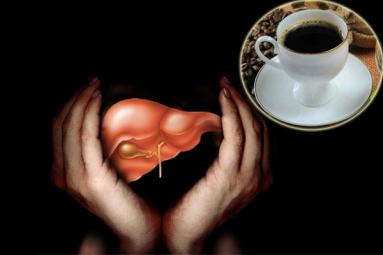
(Image source from: Canva.com)
Liver cancer was previously thought to mainly affect older individuals or those who consume a lot of alcohol, but doctors are now noticing a troubling increase in cases among younger individuals. Oncologist Dr Sanket Mehta pointed out in an Instagram post, “Did you know that liver cancer is becoming more common in young people, including those who don’t drink?” He shared data from around the world and the country, stating, “The World Health Organization reports that liver cancer cases have doubled since 1990. While many are due to viral hepatitis, nearly 16% have unknown origins, often related to fatty liver disease (NAFLD) in people who don’t drink.” In India alone, NAFLD impacts 16–32% of adults, which translates to about 120 million individuals. Worldwide, the occurrence of NAFLD in those aged 15–39 rose from 25% in 1990 to 38% in 2019. Dr Mehta also referenced a major study from Korea involving 5 million young adults, which indicated that NAFLD increased the risk of liver cancer by 13%, even when considering factors like obesity and alcohol use.
So, what is causing this increase? Dr. Mehta believes it is mostly due to lifestyle choices and health issues related to metabolism, such as lack of exercise, overeating, stress, and the growing prevalence of diabetes. However, there are ways to lower the risk. He suggested that individuals “should have regular liver check-ups if they have fatty liver, stay active, eat healthy meals, control their weight and blood sugar, and be aware of early warning signs like tiredness, discomfort, or mild jaundice.” His final important message was: “Keep in mind that liver cancer can also affect people who do not drink. Getting screened early can be life-saving.” Dr Bhushan Bhole, a senior consultant in GI Surgery and Liver Transplant at PSRI Hospital, told indianexpress.com, “Non-alcoholic fatty liver disease (NAFLD) has become one of the main causes of liver damage worldwide. In NAFLD, too much fat builds up in the liver, often connected to obesity, diabetes, high cholesterol, and lack of physical activity. Over time, this excess fat can lead to inflammation and scarring, referred to as non-alcoholic steatohepatitis (NASH). Persistent damage and scarring of the liver increase the chances of cirrhosis, which significantly raises the risk of liver cancer. The problem is that this damage can happen silently, even in those who have never drank alcohol, making NAFLD a major cause of liver cancer among young people.”
NAFLD is frequently referred to as a "silent illness" because many individuals do not exhibit signs during its early phase. Those who are overweight, obese, or have health issues like diabetes, high blood pressure, or high cholesterol are more likely to be affected. "Even individuals with a healthy weight but unhealthy lifestyle choices can experience this. Since signs may show up only when the disease has progressed, early identification depends on tests. Simple assessments like liver function blood tests, liver ultrasounds, and regular health check-ups can assist in spotting fatty liver early. Individuals with a family background of liver illnesses should also be cautious," says Dr Bhole. According to Dr Bhole, engaging in regular physical activities, with at least 30 minutes of moderate exercise five days a week, provides significant protective benefits. Eating a well-rounded diet that includes plenty of vegetables, fruits, whole grains, and lean meats, while cutting back on sugary drinks, fried foods, and processed snacks, is essential.
"Keeping a healthy weight, managing blood sugar and cholesterol levels, and steering clear of unnecessary drugs or supplements that could harm the liver are also important. Small but regular changes in lifestyle, like eating less late at night, drinking enough water, and making sleep a priority, can greatly lower the long-term chance of liver disease and liver cancer," concludes Dr Bhole.










